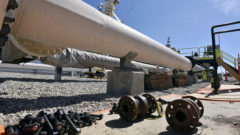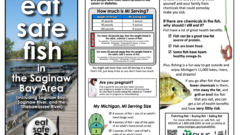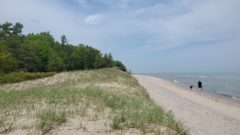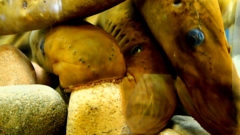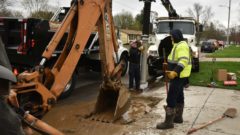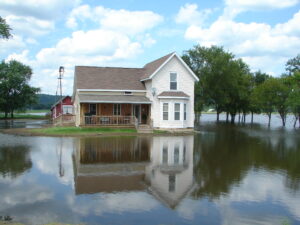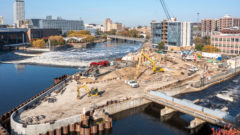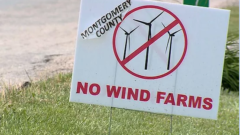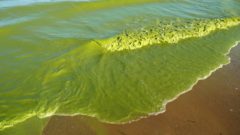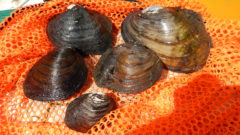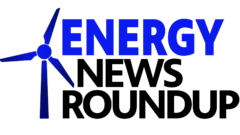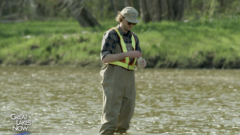Water Policy Analyst
Summary
The Water Policy Analyst (Analyst) is an integral part of the Alliance’s policy team, supplying research and analysis to advance priority policy campaigns across clean water & equity, agriculture, and restoration. The Analyst has a deep commitment to equity and environmental justice and is driven to support the delivery of safe, clean, and affordable water for people and wildlife in the Great Lakes basin. The Analyst understands how the regulatory environment, public demand, and funding and financing options interplay to shape clean water outcomes. They work closely with an Alliance staff team including planners, government affairs, and communications professionals, to ensure effective delivery and uptake of research and recommendations.
The Analyst works internally to track, analyze, and synthesize information about policy developments in key geographies to support Alliance campaigns (starting at roughly 50% time on drinking water, stormwater and wastewater investment, access, and regulation; 25% on agriculture and water pollution; and 25% on aquatic invasive species prevention). The Analyst has strong policy literacy and expert ability to track, interpret, and communicate policy developments and recommendations in written and visual forms to support issue-based policy campaigns. The Analyst employs data visualization, graphic organizers, and innovative policy analysis, education, and communication tools to elevate policy insights and share recommendations with diverse audiences.
A typical day for the Analyst…might start with a check-in with Policy Director for Clean Water & Equity to discuss progress on projects and coordinate tasks. You’re finalizing a report with talking points and graphics to support policy recommendations for the lead-free water campaign when a teammate emails with a semi-urgent request for an update on water affordability legislation in Michigan ahead of an afternoon meeting with agency staff. You quickly reach out to a partner in Michigan to confirm your understanding of the political landscape and get back to your colleague with any updates. You finish edits to the report on lead-free drinking water to share with Alliance campaign staff and communications team before joining the weekly Ohio legislative briefing led by a state environmental non-profit partner. You do not have a speaking role on the call this week, so you can relax or multi–task while listening for updates related to Alliance campaign priorities. Then, you wrap up your afternoon by updating your team’s policy tracking document and jotting down a quick note on an agriculture policy development from the Ohio call to share with Agriculture & Restoration Policy Director at your next check-in. It has been a busy day, so you log off and unwind.
The Analyst reports to Policy Director for Clean Water & Equity.
Responsibilities
Track, Synthesize and Analyze Policy Priorities
- Ability to track policy developments across multiple jurisdictions, conduct independent policy and legislative analysis to quickly identify critical provisions of policies on the Alliance’s agenda and recommend action (support, oppose, abstain or other engagement)
- Collaborate effectively with multiple internal staff members working on a variety of policy issues to refine the analysis of key projects for use in developing communication materials to advance campaign priorities
Communicate Policy Recommendations
- Prepare compelling reports and visualizations of information tailored to diverse audiences of decision makers, impacted stakeholders, agency staff, media outlets and Alliance supporters
- Identify and describe opportunities to shift existing approaches to delivering water services, restoration efforts, and regulatory practices to advance water equity and ecological improvement with a focus on state and federal policy developments that shape the pace, efficacy, and equity of water infrastructure implementation
Relationship Building
- Build and maintain strong working relationships with internal staff who have diverse backgrounds, skill sets, and who work remotely across several states and multiple time zones
- Be able to understand political landscape and develop analyses and recommendations that account for dynamics between external partners and experts, including stakeholders from the utility, NGO, labor, business, health, research, and other sectors
Program Development
- Contribute to annual and multi-year work and campaign plans
- Recruit and manage temporary research assistants from time to time as needed
- Track and report on grant deliverables, project budgets, and expenses
Additional Duties
- Actively contribute to public dialogues in the fields of water infrastructure and water equity through conferences, roundtables, and workshops that reach beyond the environmental NGO community
- Contribute to the creation of proposals for philanthropic funding to support the work, including doing so in collaboration with complementary partners where possible
Knowledge/Skills
- Ability to translate multiple perspectives on policies into analysis that supports effective external communication to key targets and stakeholders
- Bachelor’s degree required and 3+ years of relevant experience in public policy, research or communication for labor or community organizing projects, economics, public administration, engineering, or related field. Advanced degree or demonstrated additional experience preferred
- Strong research, data analysis and visualization skills, ability to interpret and analyze data, convert analysis to different types of communication materials (e.g. talking points, blog posts, data visualization and graphics) that can be used as effective policy communication and storytelling tools that engage the media, Alliance supporters and public officials
- Demonstrated experience tracking state legislation and administrative policy and identifying how those policies advance or impede policy advocacy
- Ability to convey recommendations in concise, precise, and compelling written and data visualization work products
- Willingness to listen and respond to the needs and demands of diverse groups of individuals and partner organizations
- Excellent listening, written, and verbal communication skills
- Motivated to work primarily internally and behind the scenes with Alliance staff
- Adept with Microsoft Office Suite and project management software
- Adhere to and exemplify the Alliance for the Great Lakes’ values of community, relationships, courage, integrity, optimism and the principles of justice, equity, diversity, and inclusion in all our work
Additional Skills / Pluses
- Fundamental commitment to socioeconomic and racial equity and demonstrated skills in identifying policy options that advance environmental equity
- Collaborative, collegial, with a good sense of humor and ability to adapt to diverse work styles; adept at working in teams and independently in both virtual and in-person settings
- Keen understanding of the dynamics of project and policy implementation within public agencies, ability to navigate complex political and fiscal landscapes and adapt accordingly
- Commitment to and passion for mission-driven public interest work related to clean water, climate adaptation, the Great Lakes, and the role of water in community resilience and revitalization
Job Parameters
- This position is full-time and consistent with Alliance employment policy. The salary range is $62,000-70,000, commensurate with experience.
- Excellent benefits, including health, dental, FSA and vacation.
- Eligibility to enroll in a retirement plan after 1 year of employment.
- This is a remote position. The Alliance is open to candidates working from anywhere, with a preference for northern Ohio, southern Michigan or Lake Michigan basin. Occasional travel within the Great Lakes region is required (starting at about 2-4 times per year).
Application Process
Please e-mail a cover letter, resume, references and writing sample to:hr@greatlakes.org. Include job title in the subject line.
Applications will be accepted until the position is filled. Materials should be compatible with Microsoft Word or Adobe Acrobat. Applicants will receive confirmation of receipt of their materials and further guidance and updates about the hiring process by e-mail, with interviews provided for finalists. No phone inquiries please.
About the Alliance for the Great Lakes
The Alliance for the Great Lakes is an Equal Opportunity Employer. The search process will reinforce the Alliance’s belief that achieving diversity requires an enduring commitment to inclusion that must find full expression in our organizational culture, values, norms, and behaviors.
AGL Operating Principles and Core Values Statement
Our vision is a thriving Great Lakes and healthy water that all life can rely on, today and far into the future. We aspire to be a voice for the lakes, and to support the voices of the communities that depend on the lakes and their waters.
The mission of the Alliance for the Great Lakes is to protect, conserve and restore the Great Lakes ensuring healthy water in the lakes and in our communities for all generations of people and wildlife. We advance our mission as advocates for policies that support the lakes and communities, by building the research, analysis and partnerships that motivate action, and by educating and uniting people as a voice for the Great Lakes.
For more information about the Alliance’s programs and work, please visit us online at www.greatlakes.org.
The post Water Policy Analyst appeared first on Alliance for the Great Lakes.
News - Alliance for the Great Lakes
News - Alliance for the Great Lakes
https://greatlakes.org/2022/07/water-policy-analyst/

